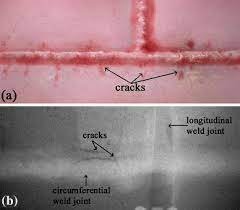
Cargo hold hatches on ships serve a fundamental purpose in the shipping industry, enabling efficient loading, unloading, and protection of cargo. They are constructed and maintained with specific considerations to ensure their durability, functionality, and safety. Here’s an overview of the purpose of cargo hold hatches, as well as their construction and maintenance:
Purpose of Cargo Hold Hatches:
- Loading and Unloading: Cargo hold hatches provide access to the cargo holds of a ship, allowing for the transfer of goods between the ship and the shore or between different ships. They facilitate the loading and unloading of cargo, which is a critical aspect of maritime transportation.
- Cargo Protection: Hatches serve as protective barriers that shield the cargo from external elements such as seawater, rain, and adverse weather conditions. They help prevent water ingress into the cargo holds, ensuring the integrity and quality of the transported goods.
- Safety and Stability: Properly secured cargo hold hatches contribute to the ship’s stability and balance. They prevent the cargo from shifting during rough sea conditions, which is vital for maintaining the ship’s stability and preventing accidents.
- Security: Cargo hold hatches are designed with locking mechanisms to secure the cargo and prevent unauthorized access, ensuring the safety and security of valuable or sensitive goods.

Construction of Cargo Hold Hatches:
The construction of cargo hold hatches involves several key considerations to ensure their effectiveness and durability:
- Materials: Cargo hold hatches are typically constructed using robust materials such as steel to withstand the harsh marine environment and the stresses associated with loading and unloading operations.
- Sealing Mechanisms: Hatches are equipped with sealing systems, including rubber gaskets and compression bars, to create a watertight and weatherproof seal when closed. These mechanisms prevent water and moisture from entering the cargo holds.
- Hinge Mechanisms: Hatches are designed with hinge systems that allow them to pivot open and closed. These hinges are often equipped with lubrication points to ensure smooth operation.
- Locking Systems: Cargo hold hatches are equipped with locking mechanisms to secure them in the closed position. These systems may involve locking pins, cam levers, or other secure locking mechanisms.
- Lifting Equipment: Larger cargo hold hatches may have integrated lifting equipment, such as hydraulic or mechanical systems, to facilitate the opening and closing of the hatches safely and efficiently.

Check out this hatch cover maintenance SC-MG-Hatch-cover-maintenance-20210505b_FINAL.pdf (standard-club.com)
Maintenance of Cargo Hold Hatches:
Proper maintenance is essential to ensure the functionality and safety of cargo hold hatches:
- Regular Inspections: Cargo hold hatches should undergo routine inspections to identify any signs of wear, corrosion, or damage. These inspections can help detect issues early and prevent further deterioration.
- Cleaning: Regular cleaning of hatches, hinges, and sealing mechanisms is important to remove dirt, debris, and salt accumulation, which can lead to corrosion and hinder proper sealing.
- Seal Inspection: The rubber gaskets and sealing mechanisms should be inspected regularly for wear and tear. Damaged seals should be replaced to maintain watertight integrity.
- Lubrication: Hinge mechanisms and moving parts should be properly lubricated to ensure smooth and safe operation. Lubrication helps reduce friction and wear.
- Painting and Corrosion Protection: Applying protective coatings and paint helps prevent corrosion and extends the lifespan of cargo hold hatches. Rust-prone areas should be addressed promptly.
- Operational Training: Crew members should receive training on proper hatch operation, safety procedures, and emergency protocols.
In conclusion, cargo hold hatches are crucial components of ships that enable efficient cargo handling, protect goods, ensure stability, and maintain security. Their construction and maintenance involve careful selection of materials, sealing mechanisms, and safety features to ensure safe and reliable maritime transportation.





